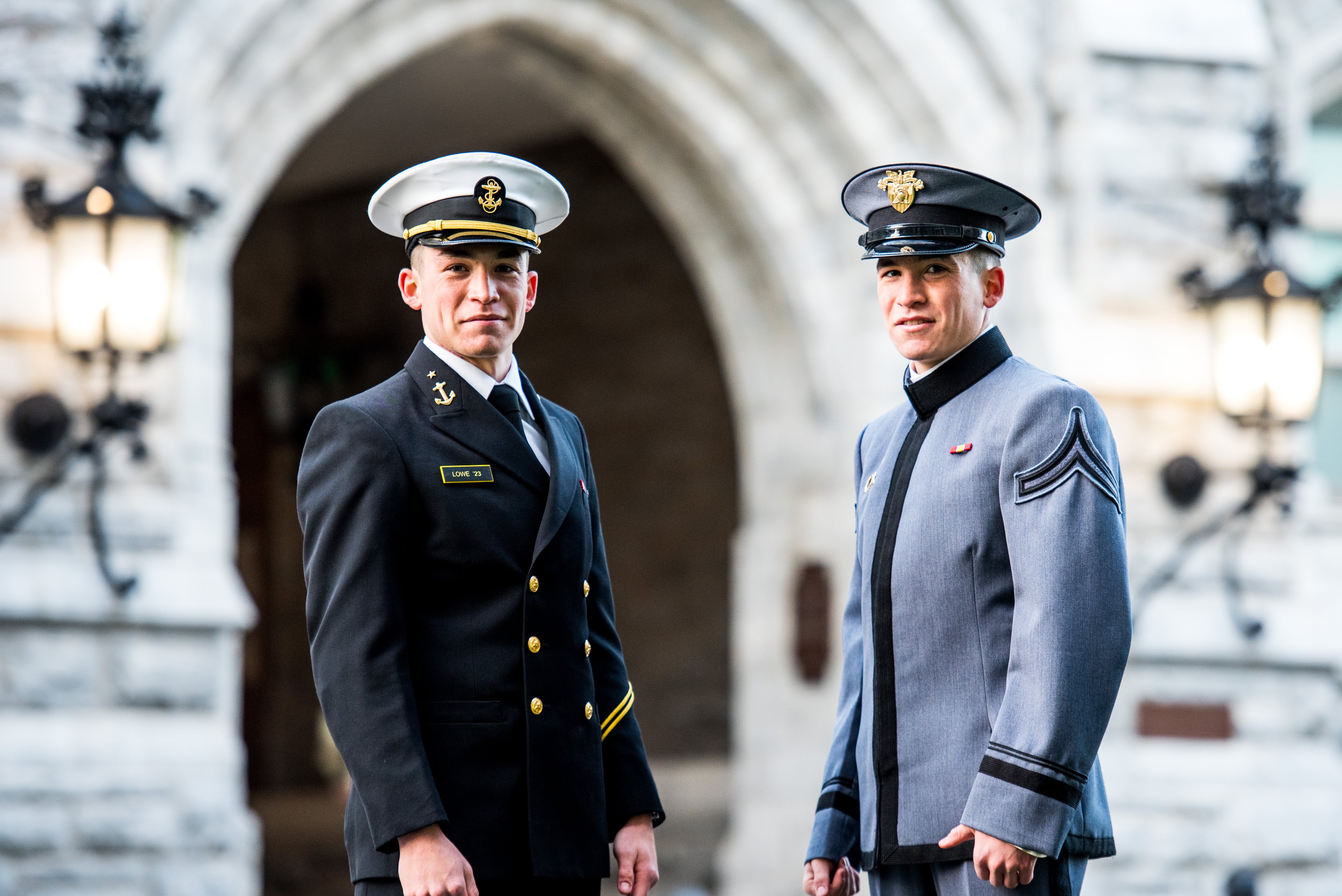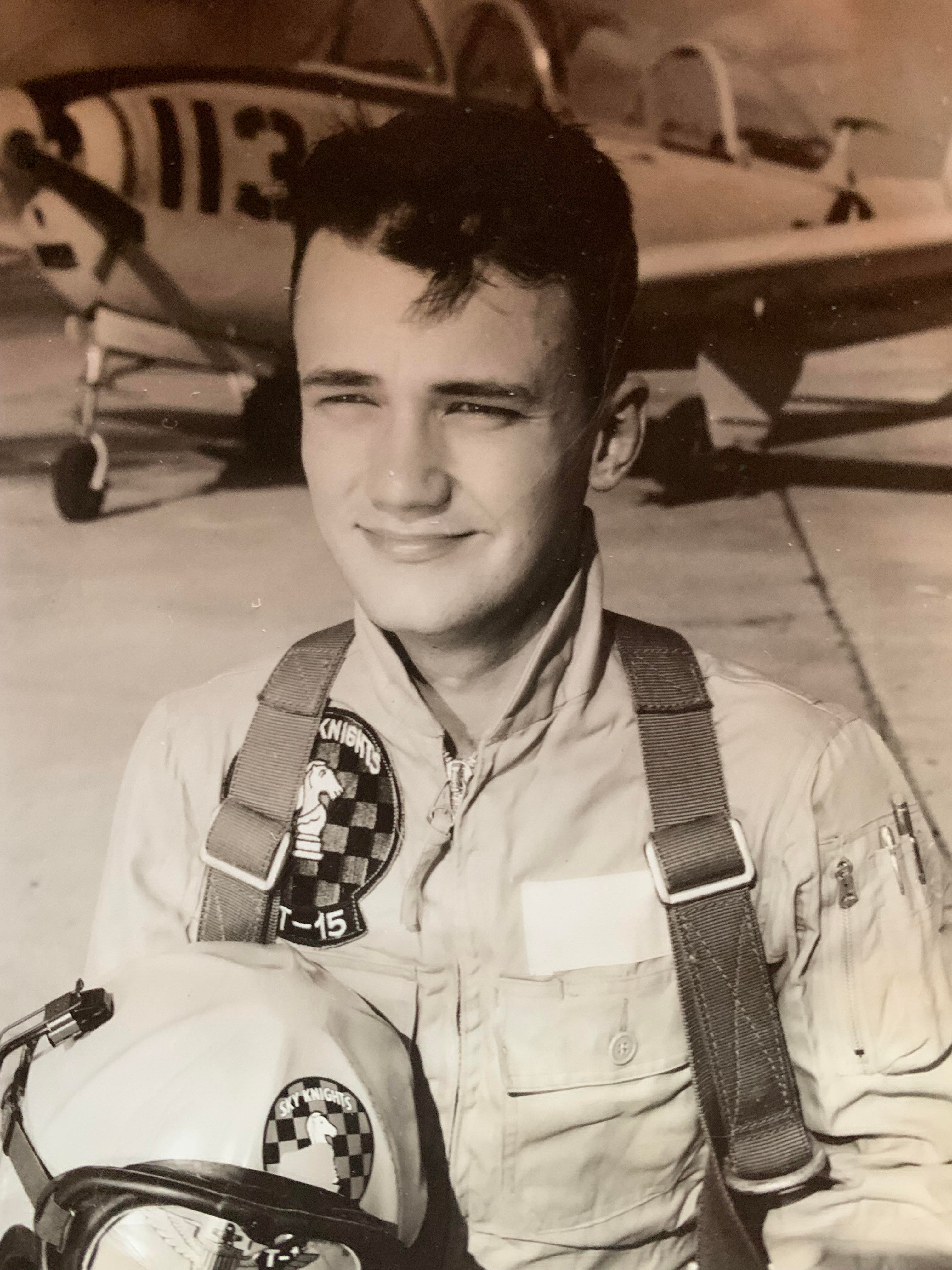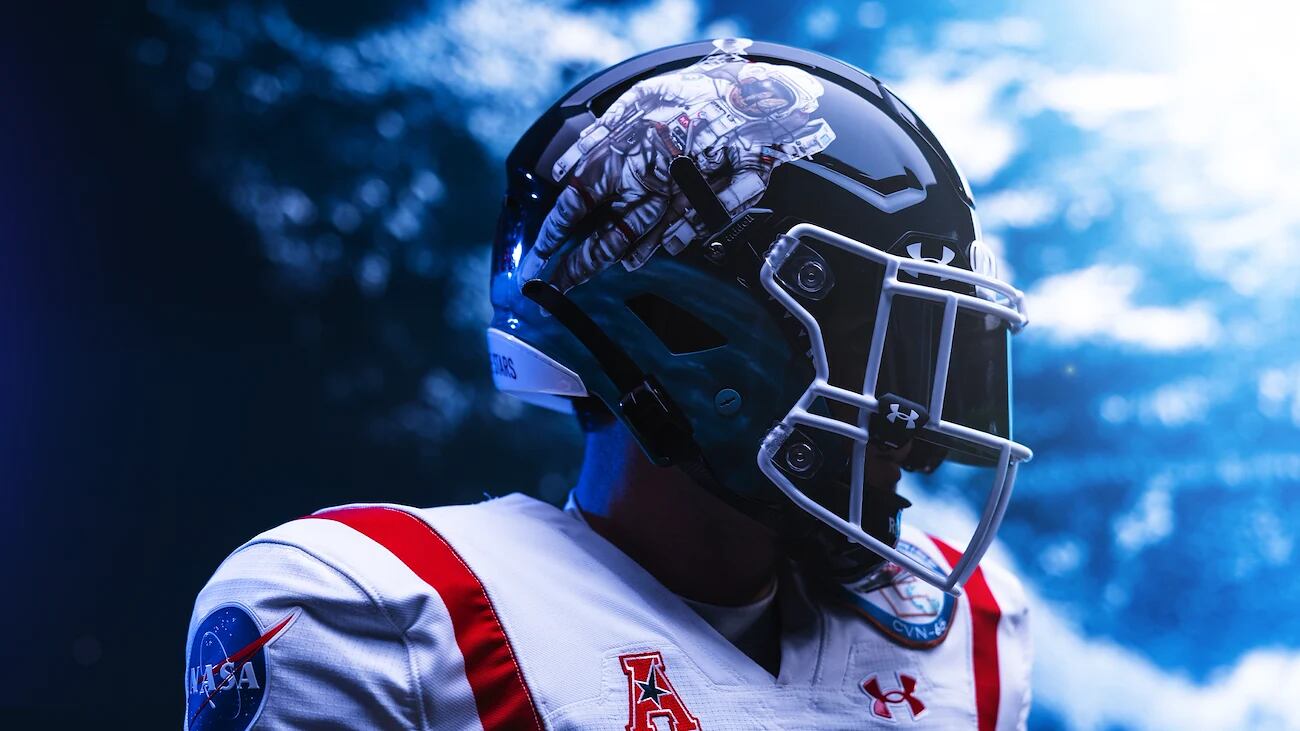PHILADELPHIA – On the side of the NASA-themed helmet in this year’s U.S. Naval Academy Football Team uniform floats a painted astronaut.
That astronaut isn’t just any astronaut.
It’s recognizing famed naval aviator and Navy astronaut, the late Bruce McCandless II. The NASA-themed helmet honors all Navy astronauts, but the astronaut on the spacewalk is specifically a nod to McCandless.
But if there’s such a thing as Navy royalty, McCandless’ family can likely be put in that category.
RELATED

McCandless, who died in 2017 at age 80, was the grandson of Willis W. Bradley and the son of Bruce McCandless, sr., both recipients of the Medal of Honor. All three attended the U.S. Naval Academy.

Bruce McCandless III lived grew up in this Navy family, where the service, it’s traditions and legacies, and especially the Army-Navy football game, took center stage.
Though his father, McCandless II, didn’t really watch football otherwise.
“He was not a big football fan at all,” McCandless III told Navy Times. “But every year he’d be sure to tune in for that (game).”
McCandless III, 61, wrote a book about his father, “Wonders All Around: The Incredible True Story of Astronaut Bruce McCandless II and the First Untethered Flight in Space,” which was published in 2021.

Though the author chose not to serve in the military, his appreciation and understanding of his father, grandfather and great-grandfather’s service has grown over his lifetime.
The author noted that some of the core principles he saw exhibited in his father’s life and service.
“I think over the years, I became more and more impressed with his dedication to the job and sort of maintaining the standards of a naval officer,” McCandless III said.
His great-grandfather Bradley served 40 years, reaching the rank of captain and serving with distinction in both world wars.
It was in World War I where Bradley’s actions resulted in his Medal of Honor award. In July 1917 during a shipboard weapon reloading on the USS Pittsburgh, rounds exploded, throwing the young Lt. Bradley back and knocking him unconscious. He recovered quickly, crawled into the fire and put out the flames, likely saving the entire ship and crew.
The senior McCandless was only six years old at the time. He would go on to join the Navy, attend the academy and, in November 1942 aboard the USS San Francisco while battling Japanese forces off Savo Island enemy fire wounded him and resulted in the death or wounding of the captain of the ship, the admiral in charge of the engagement and his staff.
Nearly singlehandedly, a wounded McCandless commandeered the ship, continued beating back Japanese military assaults and lead other ships in the fleet to victory, which led to his Medal of Honor award.
McCandless II gradated from the academy in 1958, second in his class only to future National Security Advisor John Poindexter and in a class that included future naval aviator, U.S. senator and Republican Presidential nominee John McCain.
The younger McCandless went on to fly the Douglas F4D-1 Skyray, the F-4B Phantom II and served aboard the USS Enterprise during the 1962 Cuban Missile Crisis.
After those tours the 28-year-old naval officer was selected for NASA Astronaut Group 5 in 1966.
From that point until his retirement from NASA in 1990, McCandless would work on multiple, major NASA projects, serving as a mission control capsule communicator for Apollo 11, part of the support crew for Apollo 14 and helping develop the Manned Maneuvering Unit, which is the self-propulsion unit used for astronaut spacewalks featured in this year’s Naval Academy uniform tribute.
McCandless II’s intersections with history, from serving as an aviator during the Cuban Missile Crisis to the historic birth and growth of NASA, were impressive. And his son sees one historic event as having possibly setting his father on the course that would lead.
It was Oct. 4, 1957, and the Soviet Union had launched the Sputnik 1 satellite, stoking fears of Soviet technology advances and sparking a space race that the United States would ultimately win.
Back then, McCandless was still a midshipman at the academy and a budding science and technology enthusiast. The Naval Academy Radio Club member ran a wire antenna to his personal radio so he and his classmates could hear the frequency beeps of the passing Sputnik satellite.
Decades later, he would float freely in space, the first astronaut to hover untethered in the vastness of space as he peered down at planet Earth.
So, when the Naval Academy officials reached out to McCandless III earlier this year to ask if he approved of them using his father’s spacewalk on the team’s helmet, he had a quick answer – yes.
“We’re real pleased with the way it turned out and excited to hopefully motivate (the team),” he said.
Editor’s Note: This article has been updated to include information recognizing all Navy astronauts.
Todd South has written about crime, courts, government and the military for multiple publications since 2004 and was named a 2014 Pulitzer finalist for a co-written project on witness intimidation. Todd is a Marine veteran of the Iraq War.





